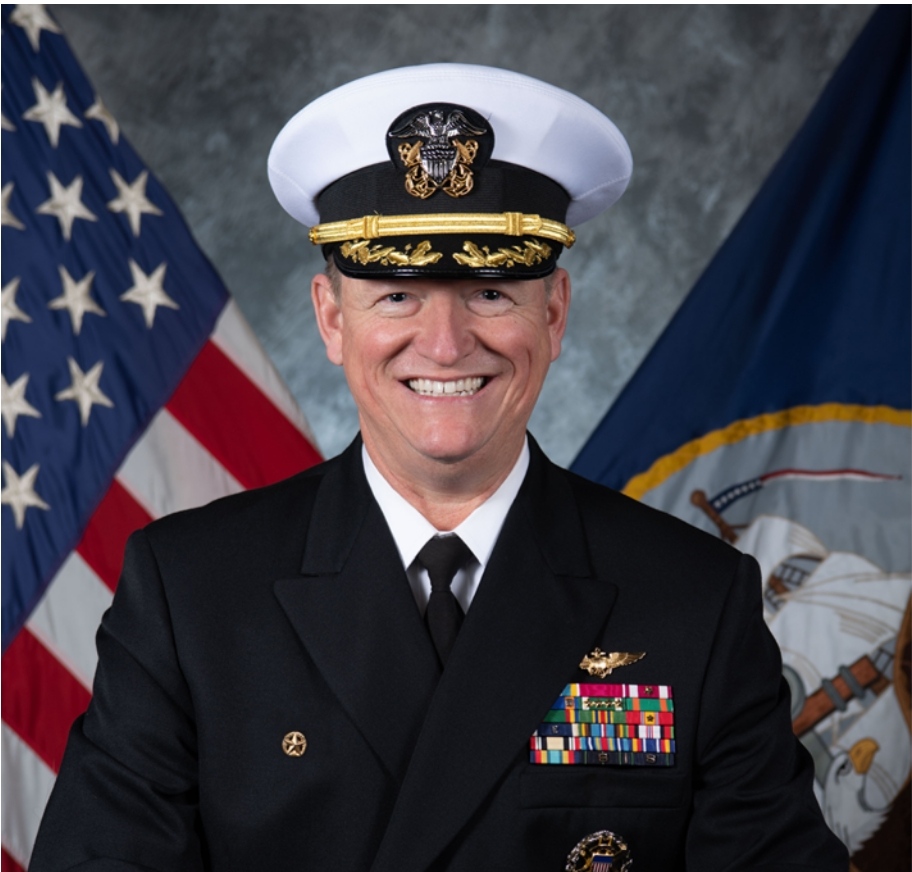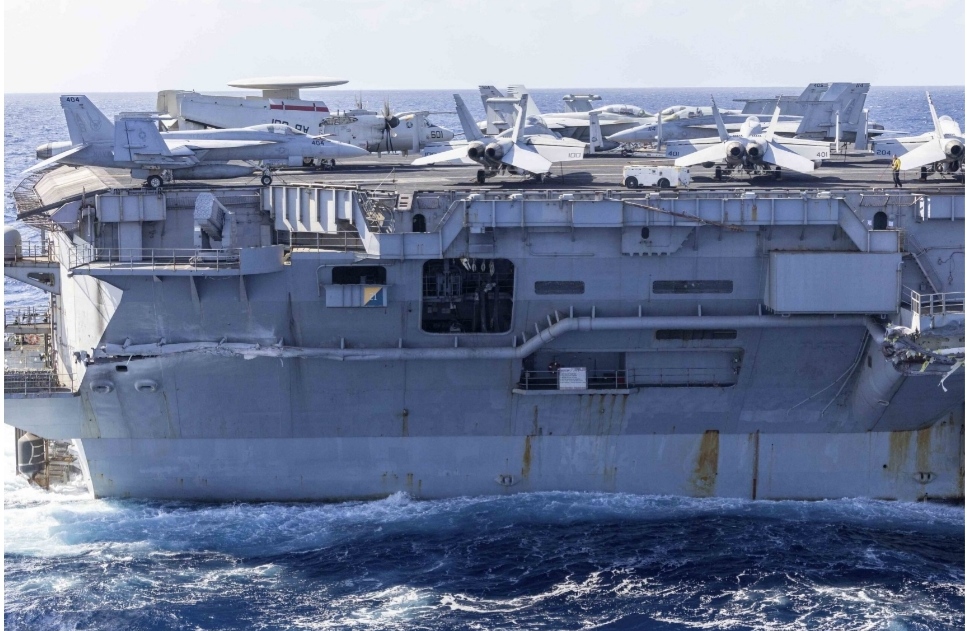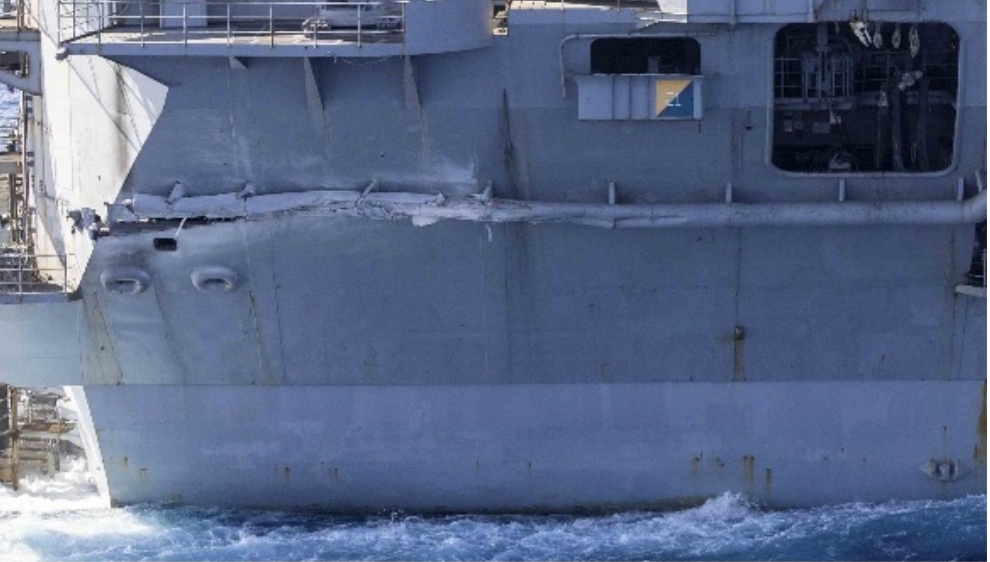Captain Commanding USS Harry S. Truman Removed From Command Following Collision

Capt. Dave Snowden. US Navy
The Commanding Officer of the aircraft carrier that collided with a merchant ship off the coast of Egypt last week has been removed from command.
According to a Congressional notification Capt. Dave Snowden was removed from command of USS Harry S. Truman (CVN-75) on Thursday, as confirmed by a Navy official.
The notification said that Snowden was removed due to a loss of confidence in his ability to command following the Feb. 12 collision between Truman and the merchant vessel MV Besiktas-M off the coast Egypt, near the entrance to the Suez Canal.
Snowden is a 1996 graduate of the U.S. Naval Academy and a career fighter pilot. Prior to Truman, he was Truman’s executive officer and commanded amphibious warship USS San Antonio (LPD-17).
The collision that damaged the aircraft carrier had taken place late at night. It had pierced the hull above the waterline on the starboard quarter of the ship and damaging a sponson located aft of its starboard elevator. No injuries were reported.
“Damage assessed includes the exterior wall of two storage rooms and a maintenance space. External to the ship, damage assessed includes a line handling space, the fantail and the platform above one of the storage spaces,” reads a Sunday statement from U.S. 6th Fleet.
“Aircraft elevator number three sustained no damage and is fully operational.”

The carrier, which deployed in September, is now in port in Souda Bay, Greece for inspection and repairs.
The commander of USS Dwight D. Eisenhower (CVN-69) Capt. Christopher “Chowdah” Hill will command Truman in the interim period. Hill led Ike during an extended deployment to the Red Sea to support Operation Prosperity Guardian.
The starboard bow of Besiktas-M hit the starboard quarter of Truman as the bulker was exiting the canal bound for Constanta, Romania. The collision damaged a sponson to the rear of Truman’s aft starboard aircraft elevator and pierced the hull above the waterline further aft.
“Damage assessed includes the exterior wall of two storage rooms and a maintenance space. External to the ship, damage assessed includes a line handling space, the fantail and the platform above one of the storage spaces,” reads the statement from 6th Fleet.
“Aircraft elevator number three sustained no damage and is fully operational.”

The Navy’s Forward Deployed Regional Maintenance Center will assess the repairs needed on USS Harry S. Truman (CVN-75) following the collision.
The assessment team includes structural engineers, naval architects, and other personnel from FDRMC and Norfolk Naval Shipyard. They will be supported by ship’s force personnel and local industry partners for the repair effort.
The Navy intends to resume Truman’s deployment, which began in September.“While the ship is fully mission capable and the ship conducted flight operations following the collision, pulling into port for emergent repairs will enable the ship to continue deployment as scheduled,” Truman commander Capt. Dave Snowden said in a Sunday statement.
Truman’s damage and repair comes during a pause in attacks on merchant ships in the Red Sea and Gulf of Aden by Houthi forces in Yemen.
The Houthis stopped the attacks, for now, amidst the ceasefire between Hamas and Israel, but leaders hinted last week they could resume.
Exterior damage of USS Harry S. Truman (CVN-75) The commander of the Truman strike group said the other ships, USS Gettysburg (CG-64), USS Stout (DDG 55), USS The Sullivans (DDG-68) and USS Jason Dunham (DDG-109), will continue to operate in the region.
“The Harry S. Truman Carrier Strike Group units remain operational across geographic regions in support of their component commanders,” Rear Adm. Sean Bailey, strike group commander, said in a statement.
“Our mission has not changed and we remain committed to responding to any challenge in this dynamic and global security environment.”




